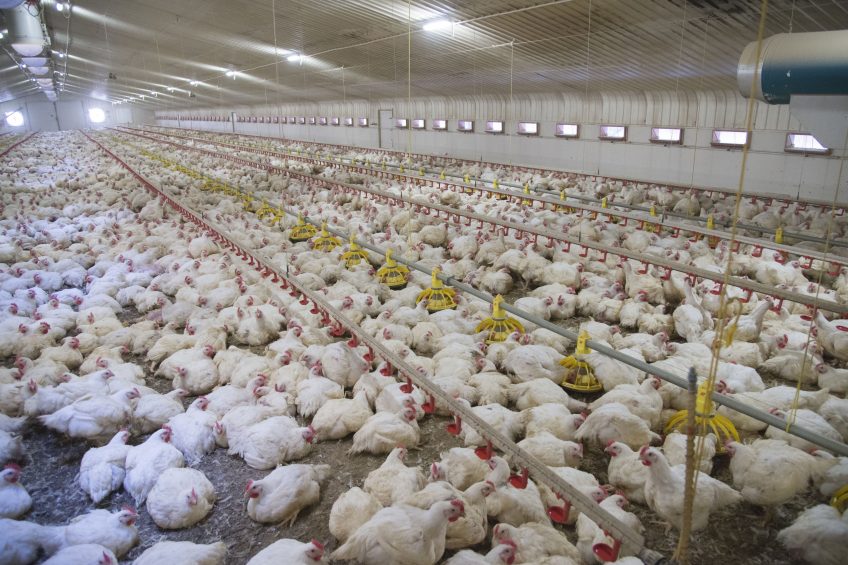How to get the most from a poultry flock health plan

Flock health plans have evolved from assurance scheme checklists to the foundations of an active partnership between farmer and vet. Poultry Health services director Sara Perez explains the benefits of a documented health plan and its potential to improve production and performance.
In the past health plans were often shelved by producers who saw them as a box-ticking exercise, required only to demonstrate that the farm complied with assurance scheme rules.
In a minority of farms that is still the case. But increasingly they are being used to underpin and formalise a working relationship with the farm vet. The plan is now often used as a dynamic document that not only sets out procedures but also serves to highlight issues that arise during a production cycle. The components of the plans have also changed – fuelled by the ongoing drive to cut antibiotic use.
The move away from antibiotics has broadened the scope of treatments and management actions such as water sanitisation, the use of organic acids, essential oils and vaccination programmes to help combat disease. For the farmer and vet it means keeping tabs on the various treatments has become a more complex task and so the plan fulfils a useful role as an organisational management tool.
What the plan covers
The length of the plan varies depending on the species and history of the flock. The content is tailored to mitigate disease risks based on the individual farm’s history. The data from the farm records such as egg numbers, mortality, water consumption and feed consumption, serves as a baseline to monitor the flock. Many farms are starting to record the information digitally and this is sent to the veterinary surgeon on a weekly basis or at the end of the birds’ cycle.
Any anomalies in the records can be logged, acting as a marker for veterinary investigation.
Once an alteration has been made to the health plan to combat the challenge – such as addition of supplementary therapies, changes in vaccines administered or tighter biosecurity – the impact of the change can be monitored and recorded. The outcome of the intervention can then be added and, piece-by-piece, a pattern develops within the document that helps track an issue and potentially identifies the solution for future reference.
Biosecurity measures
It is the producer’s responsibility to prevent disease by controlling the movement of people and equipment on to the unit and to keep out vermin and wild birds. So, many plans detail biosecurity measures for buildings, right down to hand sanitisation and boot disinfection protocols. Poultry Health Services is in partnership with poultry building company, The Clarke Group Construction, and works together to ensure that new poultry houses and new farms are as biosecure as they can be for the type of bird and production.
Contingency planning
In addition, contingency plans are set out to ensure the farm is equipped to mitigate the risks from Notifiable diseases such as Avian Influenza and Newcastle Disease or diseases with serious financial and trade implications such as Salmonella or Mycoplasma.
Vaccination programmes
The detailed plan, devised in partnership with the vet, sets out a vaccination programme matched to each farm’s risk profile, production type and movement schedule.
For example, a pullet rearer’s stock will be vaccinated frequently according to a regular programme through their 16 weeks on the unit. But the vaccination programme can be tweaked to take account of additional pathogens by referring to the destination farm’s health plan and documented disease profile. This requires good communication between the pullet rearer, the vet and the laying farm to make sure that all follow a coordinated approach through the life of the birds: from placement at day old to depletion. The same principle applies to broilers and turkeys. The more information is available about the flock of origin and vaccination at the hatchery, the more the vet can help the producer to achieve its goals.
Other management factors
The document can also set out a treatment regime ahead of stock movement to provide specific vitamins and supplements that will reduce the effects of stress during transit. Plans can also include information on lighting, heating, ventilation and air quality. While these regimes may have been established for some time, they can prove to be important parameters when cross-referenced with a disease outbreak or drop in performance.
Health plan reviews
Health plan reviews are carried out at different points in the production cycle according to the system they cover.
On broiler units the recommendation is for a monthly update ahead of every crop change, even when there have been no major problems highlighted. The producer and vet use the plan’s diarised contact time to discuss the crop and look at the recorded management issues to assess whether there are any changes which could be made ahead of the incoming flock.
This discussion can be carried out over the phone and the next flock’s vaccination programme or disinfection regime can be put in place without a face-to-face meeting. However, this is not advised because a vet visit is more likely to identify underlying issues that may appear routine to the farm but could represent an opportunity to improve health or production performance. Where issues or queries have been recorded in the health plan, it is best to arrange a farm visit before the flock is depleted. On layer units, it is advisable to discuss the plan a minimum of three times during the life of the flock:
- 1-2 weeks post-placement;
- 35-40 weeks (mid-lay);
- 65-70 weeks as the flock approaches depletion.
These timings allow the vet time to implement any relevant tweaks to the plan for the existing flock and to make adjustments ahead of the next cycle. This is particularly important for autogenous vaccines as they normally take 9 to 10 weeks to manufacture.
Health plan benefits
When used actively, a health plan can act as a reference that helps to eliminate costly, repeated failings. The health plan acts as a focus for the vet and farm manager who analyse the farm’s production history together and work towards clearly identified goals. The closer the unit works with the vet, and the more detail is included, the more the document becomes an active tool, highlighting potential areas that can then be investigated. While vet visits to review the plan and suggest improvements cost an average of £150, there are potential additional benefits in production efficiencies and mitigated disease risks to be gained.
The consultancy costs may be very quickly outweighed. Achieving a 1% rise in egg production or a reduction in 0.1 points in FCR, through implementing management changes highlighted in a plan, could be worth thousands of pounds. And the document provides evidence of compliance with assurance scheme rules which yield better returns and access to more secure market outlets.
Sometimes the health plan process reduces costs by identifying a number of seemingly relatively minor issues. For example, highlighting an inappropriate disinfectant for boot dips that does not kill Salmonella or perhaps by identifying part of a farm’s routine that could be unwittingly adding to costs such as mistimed lighting regimes or feed runs. Because they are part of a farm’s day-to-day running order it is often only when the vet and farmer sit down to analyse the records that these small anomalies come to light. But rectifying these, and then documenting a procedure so that they do not recur, can add up to huge savings.
Active document
That is especially so when the plan is distributed to staff and used as a working tool and guide across the entire workforce.
The document itself includes checklists showing when tasks have been completed. For bigger units, the checklist can be used by staff who sign and date the document to show the task has been carried out. For example, routine overshoes taken for Salmonella testing can be checked off and later marked up with the lab’s reference number acting as a record for watertight traceability.
The document also provides continuity for incoming staff, inspectors and vets. Having a document that acts as a constant reference, particularly on large farms spread across different sites, can reduce the potential for costly mistakes made by newcomers and cut the need for repeated communication.
Overall, the written plan helps to safeguard the flock, reduces costs and makes the life of the producer and staff far easier.













